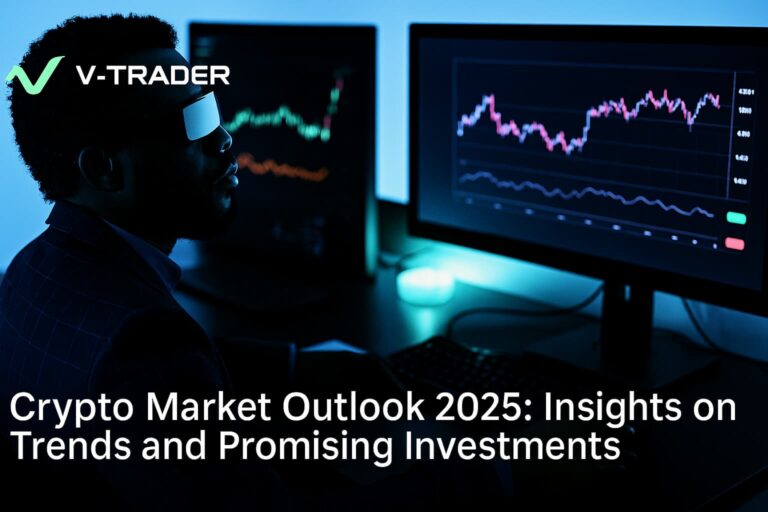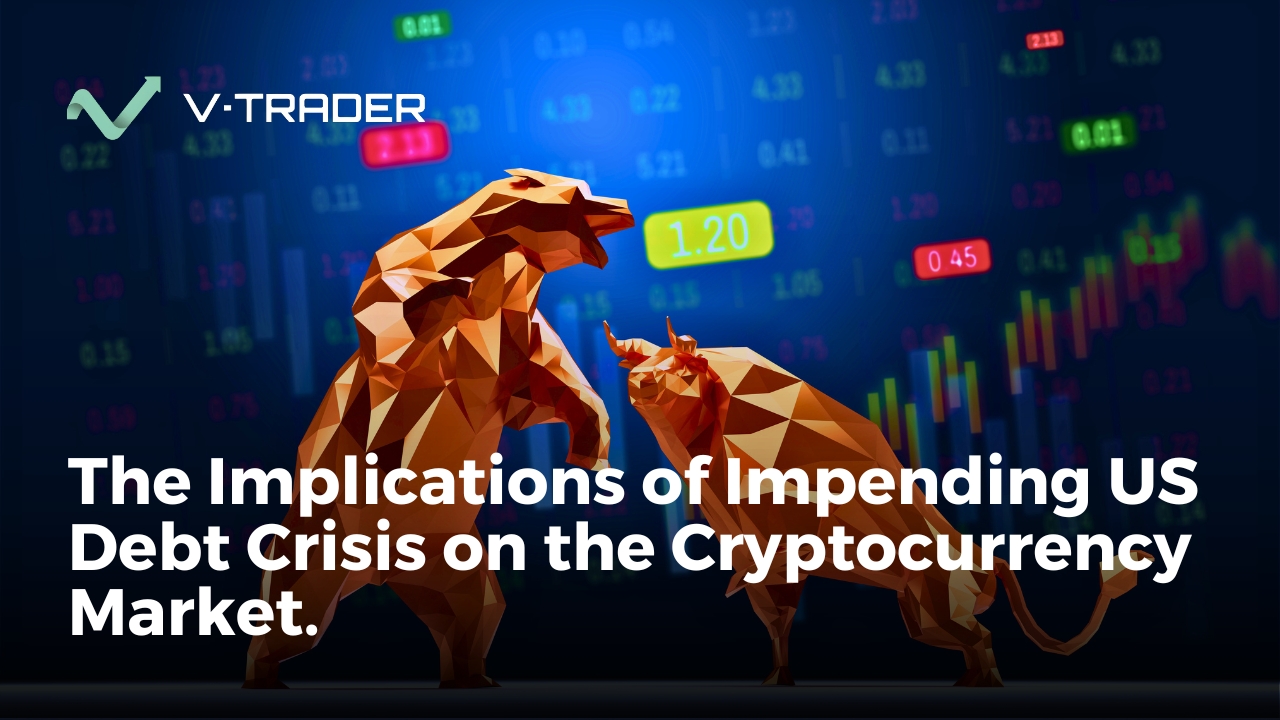Market Overview
As we step into 2025, the crypto world feels like a new frontier compared to the turbulence of 2022 and 2023. Those years were marked by wild price swings, shocking failures like the collapse of FTX in late 2022, and a market that struggled to find its footing during global geopolitical unrest. Yet today, a different picture is emerging. The market is showing clear signs of maturity, with major crypto indices nearly doubling their value from 2022 to 2024. The total crypto market cap has soared past $3 trillion, led by Bitcoin’s dominant rise to $1.8 trillion.
Key catalysts such as U.S. approvals for spot Bitcoin ETFs and a surge in institutional adoption have helped fuel this new wave of optimism. Even in the face of occasional market plunges and sharp price shocks, the underlying ecosystem has proven remarkably resilient.
In this article, we will dive into the state of the crypto market in 2025, uncover the major forces shaping its future, and show how traders and investors can position themselves to seize the opportunities ahead.
State of the Crypto Market in 2025
The Almighty Bitcoin
Bitcoin’s price chart best reflects the wild ride of cryptocurrency over the past year. The cryptocurrency briefly soared past $100,000 per unit after the 2024 U.S. election and hit a new all-time high around $106,000 in January 2025. After we saw the price soar, a correction followed, Bitcoin retreated into the $80–90k range by spring 2025. But traders have gotten used to such volatility, it is typical for crypto, prices swinging sharply with regulations impacting them and periodic panic selling.
Yet many investors remain optimistic. For example, institutional demand for Bitcoin ETFs surged dramatically in 2024 as regulations clarified, and Bitcoin dominance (its share of total crypto value) climbed toward 60–62% by late 2024 thanks to the new inflows of capital.
Overall, 2024 was a very strong year: crypto’s total market capitalization nearly doubled (from about $1.65 trillion to $3.21 trillion), as prices of both digital assets and tokens broadly recovered toward previous highs.
Where is the Crypto Hotspot
Despite past shocks, North America has led the cryptocurrency resurgence. It remains the world’s largest crypto market by value – roughly 22.5% of global on-chain activity in 2023 and 2024. This number reflects heavy institutional involvement, legacy financial players like Goldman Sachs, Fidelity, and BlackRock are now taking serious positions in the crypto space, marking a maturation of the market.
Diversity in the investments themselves is also widening, new investment vehicles (like NFTs, smart contracts, stablecoins) are gradually gaining market share to core utility. Many of these assets are now being used beyond speculation, including for collateral in lending, payment settlement, and tokenization of real-world assets.
What About Other Cryptocurrencies?
Bitcoin and Ethereum still anchor most traders’ portfolios, but investors are increasingly diversifying into other assets. For example, Ethereum’s extensive upgrades (e.g. the March 2024 Dencun release) and the launch of ETH spot ETFs in mid-2024 spurred interest. Ethereum saw record ETF inflows even as its price declined this year.
Other blockchains are capturing attention too: Solana (SOL), Polygon (MATIC), Polkadot (DOT), Cardano (ADA), Ripple’s XRP, and even meme-coins like Dogecoin (DOGE) have all seen renewed demand.
Key Lessons from Recent History
Ultimately, in Q1 2025 Bitcoin and a few altcoins outperformed the rest – SOL, DOGE, and Avalanche (AVAX) to name a few. Overall, crypto still remains highly volatile, but the overall trend is a positive one spanning over a decade.
Regulatory Landscape
Regulation in 2022–2024 was a rollercoaster ride, which could be seen in the price charts for those years. In the U.S., 2024 saw historic milestones, most notably, the SEC approved spot Bitcoin ETFs in January and Ethereum ETFs in July, attracting billions in new capital.
The SEC also signaled a shift in tone. Under former Commissioner Hester Peirce (an appointee of the past Trump presidency), the SEC’s Crypto Task Force was established to provide clarity on the application of federal laws to the crypto market. More recently, incoming SEC leadership under Paul Atkins (appointed by the second term Trump administration) has emphasized collaborative oversight, which industry leaders were happy to see.
In April 2025, Chair Atkins hosted a landmark roundtable calling for crypto-friendly rules and backing away from adversarial stances. The SEC even paused its long-running lawsuit with Ripple, suggesting regulators are prepared to settle or drop it under the new leadership.
Global Framework
- Globally, clearer regulations are emerging. In Europe, the Markets in Crypto-Assets law (MiCA) took effect in 2024. This law sets standardized rules for crypto issuers, wallet providers, and exchanges across all member states, giving much-needed legal certainty to businesses and investors.
- In Asia-Pacific, regulators rolled out pilot programs and “sandbox” environments to test crypto projects. These sandboxes allow startups to experiment with blockchain innovations under regulatory supervision without facing immediate compliance barriers.
- Major hubs like Hong Kong, Singapore, Japan, and Australia advanced licensing regimes. These licensing schemes create official paths for exchanges and asset managers to operate legally, helping to attract more institutional players.
- APAC sandboxes and new regulations in the UAE and Middle East were among 2024’s big crypto milestones. In these regions, authorities are competing to become global leaders by offering favorable rules for digital asset trading, custody, and tokenization projects.
- Many G20 nations and financial centers have launched crypto-friendly frameworks to nurture innovation. Governments are recognizing the economic potential of crypto, working to balance consumer protection with supporting blockchain growth across sectors like finance, real estate, and supply chains.
How Does This Affect Price?
These regulatory changes are already spilling into the broader economy and driving additional interest into crypto. On one hand, more clarity has spurred institutional adoption, U.S. pension funds (Michigan, Wisconsin, etc.) have begun holding crypto or crypto ETFs in public portfolios, and even state governments are discussing strategic Bitcoin reserves as formal assets.
On the other hand, we have a series of tighter rules affecting companies and consumers, banks face new AML/KYC standards, and centralized exchanges must navigate strict securities laws.
Looking ahead, the influence of the Trump administration will loom large. President Trump’s 2024 win led to pledges of pro-crypto policies, he announced plans to nominate Paul Atkins as SEC Chair and came through with that. He even floated the idea of a national Bitcoin reserve which different government agencies are currently evaluating.
Pro-crypto majorities in Congress could flip U.S. regulation from a headwind to a tailwind in 2025. From Europe’s MiCA to the U.S. ETF approvals, these major regulatory changes lay the groundwork for further growth. The trend is clear: thoughtful regulation is being implemented worldwide, shaping an environment where digital assets increasingly interact with the broader economy.
Impact of Macroeconomic Conditions
The crypto market in 2025 is not insulated from the broader economy. In fact, crypto has grown more correlated with equities and macro trends. Citigroup analysts note that “equities remain the largest macro driver of crypto, with the impact of the U.S. dollar fading”.
- In practice, this means crypto prices will often rise and fall with stock markets. For example, Bitcoin’s rally to ~$106,000 coincided with a strong 2024 stock market. On the other hand, early 2025 saw BTC fall about 12% as the NASDAQ and S&P 500 dipped (down 10.3% and 4.4%, respectively). In Q1 2025, Bitcoin’s record high occurred immediately after Trump’s inauguration, but by quarter’s end, it had retraced alongside other risk assets, illustrating their linked correlation.
Trade policy is another key macroeconomic factor influencing crypto valuations. New U.S. tariffs announced in early 2025 triggered fresh declines in crypto markets. Tariffs tend to inflate import costs and provoke trade tensions, slowing global growth. These are forces that generally drive investors into safer assets and reduce appetite for crypto.
- As U.S. tariffs rose, the dollar index (DXY) unexpectedly fell around 4.6% in early 2025. This created financial cross-currents, some investors feared higher inflation (a definite plus for crypto’s inflation-safe narrative), while others sold their more riskier assets under tighter monetary policy. The net result was choppy price action, a lesson that tariffs and global trade wars can provoke abrupt crypto declines.
- At the same time, lenient central bank policies and broader economic health support crypto demand. Early 2025 was marked by “U.S. economic exceptionalism” with resilient growth and easing inflation, which initially supported crypto. Now looking forward, expectations of Fed rate cuts (assuming the economy soft-lands) could further support this asset.
However, if inflation stays stubborn or a recession looms, crypto valuation could also face pressure. Notably, in severe downturns crypto has shown mild “safe-haven” behavior. But this isn’t always guaranteed, crypto remains highly speculative, and in the short-term it tends to amplify overall market sentiment whether it be bullish or bearish.
In summary, macro trends are driving crypto prices like never before. A strong stock market and the lowering of interest rates lifted crypto in 2024, while trade frictions and rate uncertainty have tugged prices back down in 2025.
Tips for Traders and Investors
Traders must watch key indicators like inflation, interest rates, and global news. In the context of the broader economy, rising geopolitical tensions or slower economic growth could sap investors’ appetite (pressuring crypto), but financial innovation, like tokenized securities or CBDCs, could broaden crypto’s role in the global economy.
Wall Street analysts forecast that crypto will increasingly behave as a tech-sector asset. Looking back over the past 25 years this means its value will largely rise and fall with global markets, but with the extra sauce of crypto volatility.
Crypto Demand: Rising or Weakening?
Institutional Adoption Continues to Accelerate
The new Bitcoin and Ether ETFs have become a massive factor for demand, driving Bitcoin’s market share up and bringing in retirement funds, endowments, pension funds and others.
The crypto demand trends in 2025 are being driven by real innovation, not just speculation. Decentralized finance (DeFi) platforms like Aave, Uniswap, and Compound are offering traders and investors access to lending, borrowing, and yield farming opportunities directly on-chain, without the need for traditional banks or intermediaries.
These DeFi protocols are growing more sophisticated, offering new products like decentralized derivatives, structured yield vaults, and even insurance against smart contract risks, which makes them very appealing to investors seeking active strategies.
Countries, companies and hedge funds have started treating Bitcoin as a “digital gold,” adding it to their balance sheets. Moreover, the technology itself just keeps improving. Lower transaction costs, faster settlement, and new use cases (gaming, NFTs, automation) are making crypto more appealing, especially to the younger generation.
Emerging market countries facing currency devaluation and limited local investment opportunities are increasingly turning to crypto as a store of value (El Salvador and Central African Republic). Trade uncertainties have only accelerated this trend.
In countries like Germany, Switzerland, and Japan, cryptocurrency adoption has reached high levels, with widespread use of crypto payments, strong support from local platforms, and governments that are generally favorable toward digital assets. Institutional adoption is arguably the biggest upward factor, as financial giants, funds, and governments gradually incorporate crypto.
For traders and investors, the lesson is that crypto markets may cycle, but long-term demand drivers are strengthening, digital assets are increasingly recognized as a permanent part of the financial landscape.
Summarizing Crypto Opportunities
The crypto market as of 2025 stands at an inflection point. After years of volatile cycles and regulatory uncertainty, the scene is set for growth. Our review shows that despite past market plunges, crypto has repeatedly bounced back, often soaring to new heights fueled by events and policy changes.
Today’s higher price levels, expanding market capitalization, and major coin innovations (Bitcoin, Ethereum upgrades, plus hot altcoins like SOL, XRP, MATIC, DOT, DOGE, ADA) demonstrate resilience among investors. Crucially, the institutional wave is real, professional money and mainstream finance are entering the arena, lending stability and legitimacy.
On the macro front, crypto’s path now closely mirrors that of the global economy and stock market. U.S. interest rates, inflation data, trade policies, and even presidential elections all sway crypto prices. This reality demands that traders keep one eye on economic news. In this evolving environment, savvy investors should focus on fundamentals (network usage, security, real adoption) and risk management rather than chasing FOMO.
Remember that past market plunges have given rise to new bull phases. By learning from 2022–2024’s lessons and embracing the evolving landscape, investors can seize the next wave of crypto opportunities. The story of 2025 could very well be one of strategic growth, and those who ride the momentum with caution may reap the rewards.
At vTrader, we make navigating the new crypto landscape simple and effective. With advanced trading tools, a zero trading fee model and industry-leading security, our platform is built for speed and peace-of-mind. vTrader gives you the edge you need to capture cryptocurrency profits.
Whether you are investing in Bitcoin, exploring DeFi tokens, or diversifying across stablecoins, vTrader is your trusted partner in the evolving world of digital finance. Sign up now for free and become a part of our integrated educational ecosystem to learn more.

Steve Gregory is a lawyer in the United States who specializes in licensing for cryptocurrency companies and products. Steve began his career as an attorney in 2015 but made the switch to working in cryptocurrency full time shortly after joining the original team at Gemini Trust Company, an early cryptocurrency exchange based in New York City. Steve then joined CEX.io and was able to launch their regulated US-based cryptocurrency. Steve then went on to become the CEO at currency.com when he ran for four years and was able to lead currency.com to being fully acquired in 2025.



Dead written written content, Really enjoyed looking through.
Great article,Very helpful and well-written. Thanks